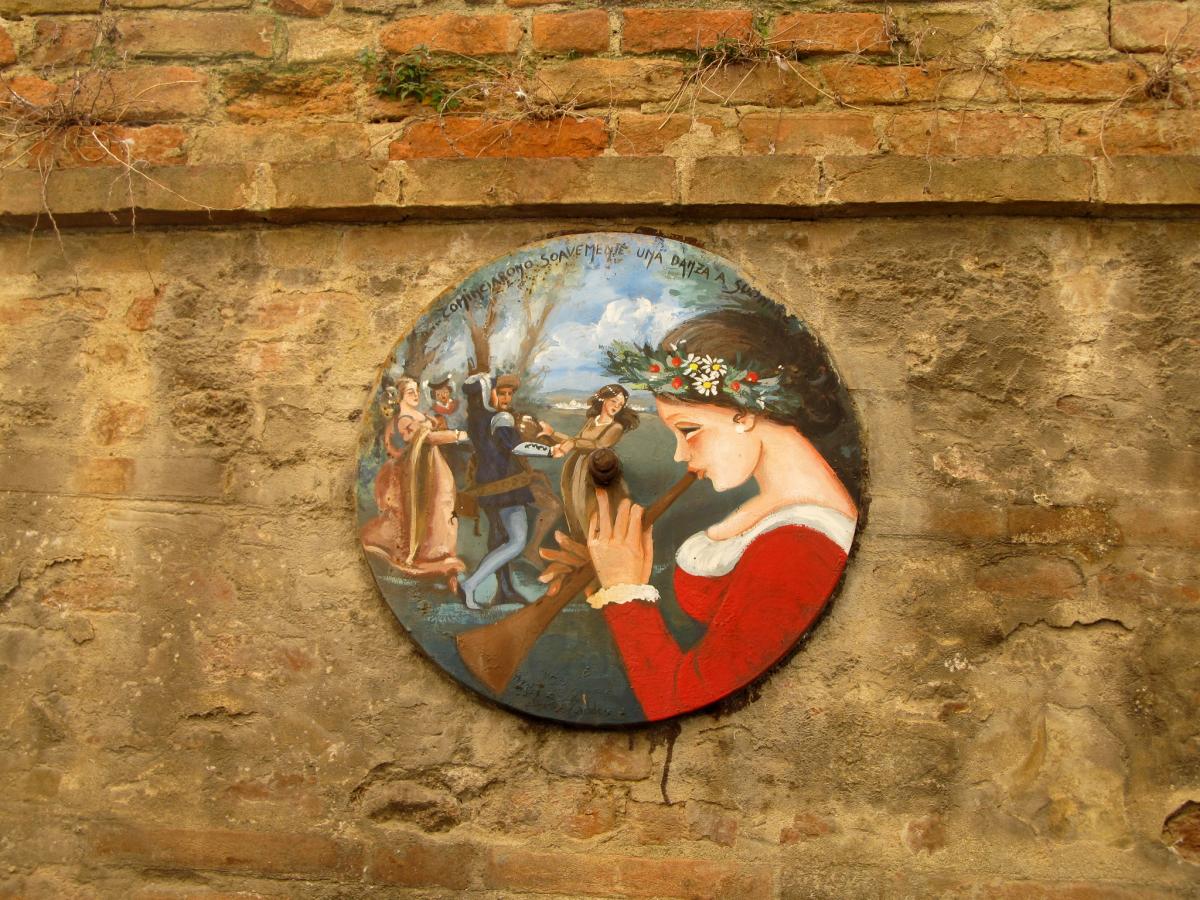




 27 June 2012
27 June 2012
 Caterina Pomini
Caterina Pomini
 8675
8675
Day One – Visit “Velathri”, one of the most important Etruscan cities
Perched high on top of a hill and protected by magnificent walls, Volterra was one of the most important cities of the Etruscan Confederation and reached its maximum splendour when the southern city-states started to decay, because of their closeness to Rome. When also Velathri was forced to join the Italic Confederation (around the half of the Third century BC) it continued to maintain a certain degree of independence, until the outbreak of the war between Mario and Sulla. Later, in the Fifth century AD, the city became the seat of a diocese, but the despotic actions of Galgano Pannocchieschi – one of the last bishops of Volterra - laid also the foundation for the anti-episcopal riot, that was soon leaded by the local lords and the emerging middle classes. In 1208, the bishops started to lose their power and the extraordinary Palazzo dei Priori became the emblem and the seat of the free commune.
Volterra is the perfect Tuscany tour destination for families and couples and can be easily reached from Florence in about 1 hour. The city is an open-air museum and has become recently famous for being the home of the Volturi in the second chapter of the Twilight series.
Day Two - San Gimignano, the Manhattan of the Middle Ages
San Gimignano was erected on the ruins of an Etruscan village of the Hellenistic period (III-II century B.C.) and began to develop especially during the Middle Ages, thanks to its strategic position on the Via Francigena; its towers are considered the emblem of medieval Tuscany, ancient symbols of power that for their charm and beauty attract every year millions of tourists. Let aside these particular buildings, the historic centre of San Gimignano was declared in 1990 a UNESCO World Heritage Site and except for some restoration works, carried out in the 18th - 19th century, its medieval appearance has remained almost intact: San Gimignano is considered today one of the best examples of urban organisation during the Age of the Communes in Europe.
While enjoying your San Gimignano Tour don't miss the Cathedral - one of the best examples of Tuscan Romanesque, Sant'Agostino, Palazzo Comunale, the Loggia, Casa Salvestrini and Piazza della Cisterna; right in this square is also located the Medieval Criminal Museum, which displays all the scary devices and techniques of medieval torture, together with some interesting documents of the Holy Inquisition.
Day Three – Certaldo, the Home of Giovanni Boccaccio's Family
Certaldo is known worldwide as the hometown of Giovanni Boccaccio, who died and was buried here in 1375; like many other towns in Tuscany, it has been inhabited since the Etruscan era, even though until the early Middle Ages its history is almost totally unknown. In the 12th century Certaldo was a fief of the Counts Alberti, by the end of the same century the powerful family was forced to accept the rule of Florence and additional settlements developed below the former village, along the important Via Francigena. At the beginning of the 15th century, Certaldo became the seat of a vicariate – an extremely important centre for local administration – in the first half of the 18th century the vicariate was suppressed and the town became a domain of the House of Lorraine.
Certaldo is really worth visiting, both for its historical buildings – perfectly preserved in the upper part of the town – and for its beautiful landscapes; your visit may start from the Boccaccio House (seriously damaged during the Second World War but meticulously restored) and later continue within the old city walls.
Other unmissable sights include: the Church of Saint Michael and Jacob (where Boccaccio is also buried), the Palazzo del Vicario, the Church and the Cloister of Saint Thomas.
THIS SECTION
IS UNDER CONSTRUCTION